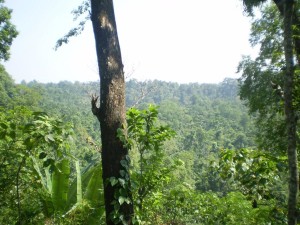Pavel Partha
A small country of only approximately 56.6 thousand square miles, the vast wildlife diversity of Bangladesh amazes all. Situated in the south-east corner of the globe, this heaven of wildlife consists of 30 farming environments, 17 hydrological plants, 230 rivers and lakes, 113 species of mammals, 630 aerial species, 125 reptiles, 260 fresh-water fish, 875 salt-water fish and 327 shell-bound fish species. Never mind that it contains the world’s largest mangrove forest, Bangladesh demands global respect for its awe-inspiring coastline in Cox’s Bazar, the largest in the world. Here, people of a wide range of cultures live in harmony with nature. There exist 45 different indigenous communities in Bangladesh who share their homes with almost 3,611 families of floral plants, including 16 kinds of endemic ones. Medicines are still prepared in rural areas with the help of almost 1,000 kinds of herbal plants.
However, not every aspect of this otherwise perfect country poses a positive picture. The Land of Tigers, unfortunately, is seeing a decrease in the number of this great beast over time. The Sundarbans now being their only homeland, only 106 remain from the 440 in 2004. Even in agriculture, farmers are now seeing a decline in the species of crops. From 12,487 kinds of crops harvested in 1982, we now find only 7,000.

Many questions, therefore, arise. How do we survive? Who provides us with the necessities to live? Have we ever thought of the selfless way we are being provided with the oxygen to breathe and the food required to survive on? What if these plants decide to go on a strike and call it a day? All hell would break loose and utter chaos would reign. And so, it would be wise for us to understand that our power, although seemingly tough, would be useless in providing us with the elements of life. Therefore, we have to learn to respect and take care of our environment and all those who belong in it. Only if we nurture plants properly will they be able to provide us with good food and pure oxygen. Only by caring for wild birds will they sing songs of harmony.
To cap it all, I will end here, pressing on the importance of our culture and wildlife. They are an invaluable reserve that must be used properly and to good ends. Recognition of this fact is found with the celebration of World Day for Cultural Diversity for Dialogue and Development on the 21st May and International Day for Biological Diversity on the 22nd May, both put forward by the United Nations (UN) to promote awareness and encourage wildlife and environmental preservation. However that should never stop us from taking a very small step towards a big and bright ecological future.

